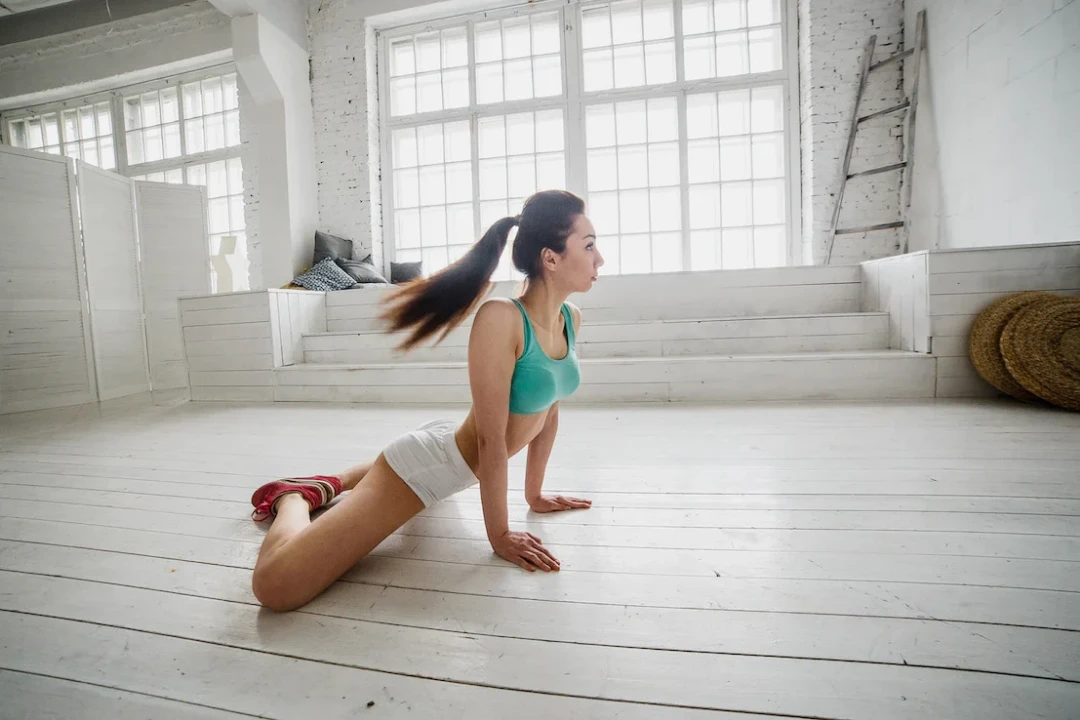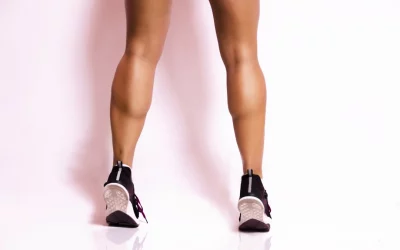Tight hips can do more than just limit your mobility—they can contribute to discomfort, disrupt your posture, and even hinder your overall movement. One key but often neglected movement is hip internal rotation, a vital component for maintaining hip flexibility and proper function.
Whether you’re an athlete pushing your body to its limits, someone who spends long hours sitting, or simply someone eager to move better, improving this range of motion can make a world of difference.
In this article, we’ll dive into how to properly perform hip internal rotation stretches, unlock their numerous benefits, and help you reclaim fluid, pain-free movement.
Benefits of Hip Internal Rotation Stretching
Hip internal rotation is essential for lower-body mobility, improving flexibility, joint function, and posture. Regular stretching of this movement pattern helps increase the range of motion in the hips, which is often limited due to daily habits that don’t engage internal rotation.
Better hip mobility enhances both daily activities and sports performance. It aids in actions like pivoting, changing direction, and maintaining balance, making tasks like standing up or getting in and out of a car easier. Additionally, regular stretching prevents injuries by reducing muscle tightness and strain on surrounding joints like the lower back and knees.
Stretching also improves postural alignment by relieving tension in tight hip rotators. Over time, consistent hip internal rotation stretches promote long-term muscle health, ensuring better movement and reducing discomfort as you age.
“For me, stretching has been a game-changer. It helps loosen up tight muscles and improves my joint mobility, so movements like squatting, lunging, and even just walking feel so much smoother and more natural.”
Best Hip Internal Rotation Stretches
 1. 90/90 Internal Rotation Stretch
1. 90/90 Internal Rotation Stretch
The 90/90 internal rotation stretch specifically targets the hip internal rotators, which are crucial for rotational movements and lower body stability. Practicing this stretch can improve efficiency in activities requiring hip rotation, such as sports, dance, and functional movement.
How to Perform the Stretch:
-
Sit on the floor with one leg in front and the other behind, both bent at 90-degree angles.
-
Align your front knee with your hip and keep your shin parallel to your torso.
-
Position your back leg at a right angle, with the shin pointing outward.
-
Maintain an upright torso, engaging your core to prevent rounding your lower back.
-
Slowly rotate your hips to shift focus onto the back leg’s internal rotation.
-
Hold the position for up to 30 seconds, ensuring controlled breathing.
2. Seated Hip Internal Rotation Stretch
The Seated Hip Internal Rotation Stretch targets the hip internal rotators, which are often overlooked in daily movement. By opening up deeper hip muscles, this stretch enhances performance in activities that require rotational movement, such as walking, running, and various sports.
How to Perform the Stretch:
-
Sit on the floor with your knees bent and feet flat, about hip-width apart.
-
Drop both knees inward toward the midline while keeping your feet in place.
-
Ensure proper knee alignment—avoid excessive collapsing or joint discomfort.
-
Maintain an upright torso with a neutral spine, avoiding slouching or leaning too far back.
-
To deepen the stretch, gently press on the inside of your knees with your hands or place a yoga block between them for added support.
3. Pigeon Pose with Internal Rotation
This variation of the traditional Pigeon Pose incorporates an internal rotation component, targeting deeper hip muscles that are often neglected in standard stretching routines.
How to Perform the Stretch:
-
Begin in a standard Pigeon Pose by bringing one knee forward and placing it on the ground while extending the opposite leg straight behind you.
-
Adjust your front knee so that your shin is angled diagonally or, if possible, parallel to the mat.
-
Internally rotate your back leg by turning the back thigh inward so that the top of your foot faces the mat.
-
Keep your torso upright or fold forward to modify the intensity of the stretch.
4. Supine Hip Internal Rotation Stretch
The Supine Hip Internal Rotation Stretch is especially beneficial for individuals with tight hips or limited internal rotation, which can impact movement efficiency and contribute to discomfort.
How to Perform the Stretch:
-
Lie flat on your back with your knees bent and feet planted on the floor, slightly wider than hip-width apart.
-
Slowly allow both knees to drop inward toward each other, creating a gentle internal rotation movement.
-
Keep your lower back relaxed and avoid forcing the motion.
-
Hold the position for up to 30 seconds, then return to the starting position and repeat for several sets.
5. Frog Stretch with Internal Rotation
The Frog Stretch with Internal Rotation is a powerful exercise for enhancing hip mobility and flexibility. By adding internal rotation to this stretch, you can target deep hip muscles that are often overlooked in standard routines.
How to Perform the Stretch:
-
Start on all fours, with your knees spread apart and feet in line with your knees.
-
Position your hips directly over your knees, keeping your ankles flexed with the inner edges of your feet resting on the floor.
-
Lower your forearms to the ground or keep your hands planted for support.
-
Slowly shift your hips back, maintaining a neutral spine and avoiding excessive arching or rounding.
-
Introduce internal rotation by gently pointing your feet outward, creating a deeper stretch along the inner thighs and hip rotators.
Improving hip internal rotation takes consistency, proper technique, and the right guidance. For a structured approach with expert-led stretching routines, WeStretch offers an easy way to incorporate targeted mobility work into your daily routine.
Tips for Effective Hip Internal Rotation Stretching
To get the most out of hip internal rotation stretching, be strategic about timing, frequency, and technique. Here’s how to optimize your routine:
-
Stretch after workouts or physical activity: Warm muscles are more pliable, helping with recovery and preventing stiffness. Incorporating adductor stretches into your cooldown can improve long-term flexibility.
-
Use dynamic movements before intense activity: Instead of static holds, opt for movements like leg swings or controlled internal rotations to prepare your hips without reducing muscle responsiveness.
-
Stretch regularly, even on rest days: Prolonged sitting or inactivity can cause tightness. A few minutes of stretching throughout the day helps maintain your range of motion and prevent tightness from setting in.
-
Listen to signs of tightness: If you feel frequent stiffness, use stretching proactively to prevent discomfort and mobility restrictions that could lead to hip or lower back pain.
-
Combine stretching with strengthening exercises: Pair adductor stretches with exercises like clamshells or resistance band hip drills to improve stability and prevent imbalances or joint instability.
Exercise Smarter with WeStretch: Your All-in-One Stretching Assistant
A consistent full-body stretching routine is essential for improving flexibility, supporting injury prevention, and enhancing overall well-being. Carefully following simple yet effective stretches targeting the hamstrings, hip flexors, back, quads, chest, and shoulders, individuals of any fitness level can reap the benefits.
Regular stretching, with attention to proper form and consistency, can help you move more freely, recover faster, and feel better in everyday activities.
Looking for a way to add some fun to your stretching routine? Check out WeStretch—an app that’s like your own personal stretch coach! With tailored plans, easy-to-follow demos, and progress tracking, it’s got everything you need to keep you limber and on point. Ready to get flexible? Sign up today and let’s get stretching!
 FAQ
FAQ
How do you loosen tight adductors?
Loosen tight adductors with dynamic and static stretches like the butterfly stretch, frog stretch, and lateral lunges.
What are the symptoms of tight adductors?
Tight adductors can cause inner thigh stiffness, limited hip mobility, and discomfort when moving or stretching.
How do you release the adductor muscles?
To release the adductor muscles, use stretching, self-massage, and mobility exercises.
What are the benefits of lying adductor stretches?
Lying adductor stretches improve hip mobility, flexibility, and internal rotation by targeting the inner thigh muscles.
What causes tight hip internal rotators?
Tight hip internal rotators can result from prolonged sitting, muscle imbalances, lack of mobility exercises, or overuse in activities like running or cycling.






